#technology article
Explore tagged Tumblr posts
Text
WAIT
I JUST REMEMBERED HEARING AN ELON MUSK QUOTE WHERE HE TALKS ABOUT HOW HE BELIEVES CHESS IS "TOO SIMPLE" OR WHATEVER AND HE SAID HIS FAVORITE GAME WAS A GAME CALLED "POLYTOPIA"

I JUST REMEMBERED THAT IVE PLAYED POLYTOPIA
It being Elon's favorite game (or at least one so important to him that his biographer dedicates a lot of time to it) is.....really really funny.
Basically, imagine Civilization, but as a mobile game. So like if Civilization Revolution was even more dumbed down (that's a Civilization insult. That's devastating. It's devastated right now). For what it's worth, it's not a bad game. On the contrary, from what I could tell in the little bit of time I played it, it's a perfectly competent game with good design. But it's not a deep game by any means. I played through it once, won easily on my first go, then saw that the other playable characters had barely any differences between them.
Like, not to imply you can judge a book by its cover, but here's what it looks like

I came across an article by Dave Karpf discussing this exact thing, and I think it describes it wonderfully

#i didnt link the article itself because its substack and i dont fuck with substack#but i did want to at least provide credit to the author because it was very well written#anyway i think about elon describing chess with the phrase 'no fog of war...no technology tree'#honestly it just reads like someone who really likes Polytopia and wishes every game were polytopia#it would be like me complaining chess doesnt have passive relics randomized paths and deckbuilding#slay the spire addresses these limitations
26K notes
·
View notes
Text
Here's the top 2 stories from each of Fix The News's six categories:

1. A game-changing HIV drug was the biggest story of 2024
In what Science called the 'breakthrough of the year', researchers revealed in June that a twice-yearly drug called lenacapavir reduced HIV infections in a trial in Africa to zero—an astonishing 100% efficacy, and the closest thing to a vaccine in four decades of research. Things moved quick; by October, the maker of the drug, Gilead, had agreed to produce an affordable version for 120 resource-limited countries, and by December trials were underway for a version that could prevent infection with just a single shot per year. 'I got cold shivers. After all our years of sadness, particularly over vaccines, this truly is surreal.'
2. Another incredible year for disease elimination
Jordan became the first country to eliminate leprosy, Chad eliminated sleeping sickness, Guinea eliminated maternal and neonatal tetanus, Belize, Jamaica, and Saint Vincent & the Grenadines eliminated mother-to-child transmission of HIV and syphilis, India achieved the WHO target for eliminating black fever, India, Viet Nam and Pakistan eliminated trachoma, the world’s leading infectious cause of blindness, and Brazil and Timor Leste eliminated elephantiasis.
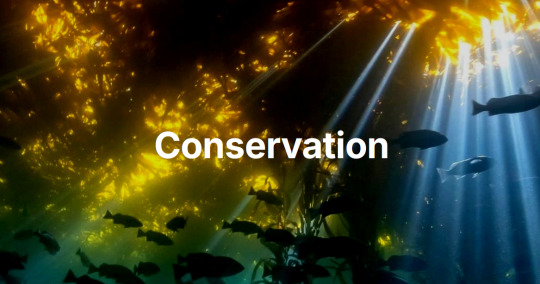
15. The EU passed a landmark nature restoration law
When countries pass environmental legislation, it’s big news; when an entire continent mandates the protection of nature, it signals a profound shift. Under the new law, which passed on a knife-edge vote in June 2024, all 27 member states are legally required to restore at least 20% of land and sea by 2030, and degraded ecosystems by 2050. This is one of the world’s most ambitious pieces of legislation and it didn’t come easy; but the payoff will be huge - from tackling biodiversity loss and climate change to enhancing food security.
16. Deforestation in the Amazon halved in two years
Brazil’s space agency, INPE, confirmed a second consecutive year of declining deforestation in the Brazilian Amazon. That means deforestation rates have roughly halved under Lula, and are now approaching all time lows. In Colombia, deforestation dropped by 36%, hitting a 23-year low. Bolivia created four new protected areas, a huge new new state park was created in Pará to protect some of the oldest and tallest tree species in the tropical Americas and a new study revealed that more of the Amazon is protected than we originally thought, with 62.4% of the rainforest now under some form of conservation management.

39. Millions more children got an education
Staggering statistics incoming: between 2000 and 2023, the number of children and adolescents not attending school fell by nearly 40%, and Eastern and Southern Africa, achieved gender parity in primary education, with 25 million more girls are enrolled in primary school today than in the early 2000s. Since 2015, an additional 110 million children have entered school worldwide, and 40 million more young people are completing secondary school.
40. We fed around a quarter of the world's kids at school
Around 480 million students are now getting fed at school, up from 319 million before the pandemic, and 104 countries have joined a global coalition to promote school meals, School feeding policies are now in place in 48 countries in Africa, and this year Nigeria announced plans to expand school meals to 20 million children by 2025, Kenya committed to expanding its program from two million to ten million children by the end of the decade, and Indonesia pledged to provide lunches to all 78 million of its students, in what will be the world's largest free school meals program.

50. Solar installations shattered all records
Global solar installations look set to reach an unprecedented 660GW in 2024, up 50% from 2023's previous record. The pace of deployment has become almost unfathomable - in 2010, it took a month to install a gigawatt, by 2016, a week, and in 2024, just 12 hours. Solar has become not just the cheapest form of new electricity in history, but the fastest-growing energy technology ever deployed, and the International Energy Agency said that the pace of deployment is now ahead of the trajectory required for net zero by 2050.
51. Battery storage transformed the economics of renewables
Global battery storage capacity surged 76% in 2024, making investments in solar and wind energy much more attractive, and vice-versa. As with solar, the pace of change stunned even the most cynical observers. Price wars between the big Chinese manufacturers pushed battery costs to record lows, and global battery manufacturing capacity increased by 42%, setting the stage for future growth in both grid storage and electric vehicles - crucial for the clean flexibility required by a renewables-dominated electricity system. The world's first large-scale grid battery installation only went online seven years ago; by next year, global battery storage capacity will exceed that of pumped hydro.
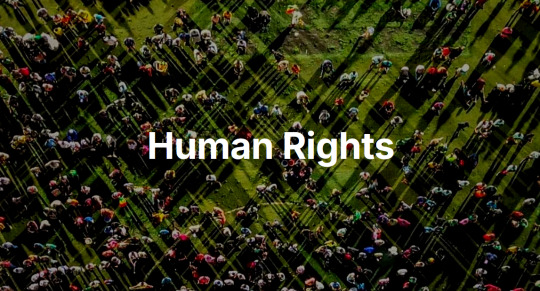
65. Democracy proved remarkably resilient in a record year of elections
More than two billion people went to the polls this year, and democracy fared far better than most people expected, with solid voter turnout, limited election manipulation, and evidence of incumbent governments being tamed. It wasn't all good news, but Indonesia saw the world's biggest one day election, Indian voters rejected authoritarianism, South Korea's democratic institutions did the same, Bangladesh promised free and fair elections following a 'people's victory', Senegal, Sri Lanka and Botswana saw peaceful transfers of power to new leaders after decades of single party rule, and Syria saw the end of one of the world's most horrific authoritarian regimes.
66. Global leaders committed to ending violence against children
In early November, while the eyes of the world were on the US election, an event took place that may prove to be a far more consequential for humanity. Five countries pledged to end corporal punishment in all settings, two more pledged to end it in schools, and another 12, including Bangladesh and Nigeria, accepted recommendations earlier in the year to end corporal punishment of children in all settings. In total, in 2024 more than 100 countries made some kind of commitment to ending violence against children. Together, these countries are home to hundreds of millions of children, with the WHO calling the move a 'fundamental shift.'
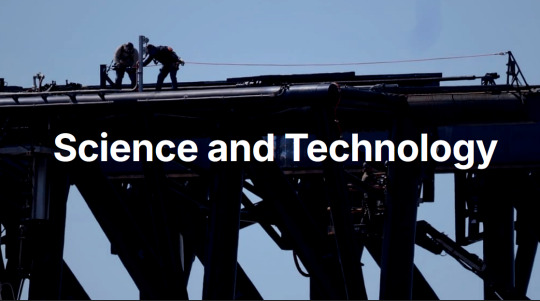
73. Space exploration hit new milestones
NASA’s Europa Clipper began a 2.9 billion kilometre voyage to Jupiter to investigate a moon that may have conditions for life; astronomers identified an ice world with a possible atmosphere in the habitable zone; and the James Webb Telescope found the farthest known galaxy. Closer to Earth, China landed on the far side of the moon, the Polaris Dawn crew made a historic trip to orbit, and Starship moved closer to operational use – and maybe one day, to travel to Mars.
74. Next-generation materials advanced
A mind-boggling year for material science. Artificial intelligence helped identify a solid-state electrolyte that could slash lithium use in batteries by 70%, and an Apple supplier announced a battery material that can deliver around 100 times better energy density. Researchers created an insulating synthetic sapphire material 1.25 nanometers thick, plus the world’s thinnest lens, just three atoms across. The world’s first functioning graphene-based semiconductor was unveiled (the long-awaited ‘wonder material’ may finally be coming of age!) and a team at Berkeley invented a fluffy yellow powder that could be a game changer for removing carbon from the atmosphere.
-via Fix The News, December 19, 2024
#renumbered this to reflect the article numbering#and highlight just how many stories of hope there are#and how many successes each labeled story contains#2024#good news#hope#hope posting#hopeposting#hopepunk#conservation#sustainability#public health#energy#quality of life#human rights#science and technology
3K notes
·
View notes
Text
Amazingly, reaction times using screens while driving are worse than being drunk or high—no wonder 90 percent of drivers hate using touchscreens in cars. Finally the auto industry is coming to its senses. From January, Europe’s crash-testing organization EuroNCAP, or New Car Assessment Program, will incentivize automakers to fit physical, easy-to-use, and tactile controls to achieve the highest safety ratings. “Manufacturers are on notice,” EuroNCAP’s director of strategic development Matthew Avery tells WIRED, “they’ve got to bring back buttons.”
156 notes
·
View notes
Text
STEM resources🔬🪐🦠
Resources for STEM subjects ▪︎ A-levels ▪︎ IB ▪︎ University entrance exam prep ▪︎ STEM book reviews ▪︎CV help
~~~~~~~~~~~~~~~~~~~~~~~~~~~~~
Articles to read
Sideroblastic anaemia
Rabies
Arctic Springtail
Topology
Story of the atom
Allergies
Genetic diagnosis with AI
#STEM#articles#website#biology#chemistry#technology#physics#sciences#maths#math#studyblr#studying#a levels#IB#ib#cv#university#exams
154 notes
·
View notes
Text
from 2017
MP3 is supported by everything, everywhere, and is now patent-free. There has never been another audio format as widely supported as MP3, it’s good enough for almost anything, and now, over twenty years since it took the world by storm, it’s finally free.
1K notes
·
View notes
Text
Picked a presentation topic that I actually find interesting.
Pros: working on said presentation is pretty enjoyable and I'm learning new things which is great and makes me happy.
Cons: I'm gonna need a course mate to stand next to me with a stick and bonk me with it every time I start going off topic trying to say absolutely everything.
#we're studying LCA in chemical technology#and we have to make slides on a chosen LCA paper#so of course i wanted something lanthanide related#and i actually did find a great article that fits here#but the downside is i want to say so much more than is relevant just bc i find it really interesting 🥲#im obviously not going to do that lol ill stay on topic#but ill be sad about it#txt#op
68 notes
·
View notes
Text
it's quite offputting to me when ppl can't disentangle their hatred for capitalism from a hatred for... new technological innovation? the ways in which capitalism has shaped the development of certain technologies has been deeply negative, not to mention that imperialism ensures that new technology is usually produced via extractive relationships with both the planet + ppl in the global south.
but this weird tying of capitalist impact on innovation (+the idea of what is/is not innovation) to hatred of innovation itself (or even more disturbing valorization of "the good old days"/implications that technology is causing social degeneracy) is baffling to me. perhaps it is impossible to achieve specific technologies without unconscionable resource extraction practices, in which case they should not be pursued. but so many ppl act like there is something inherently morally suspect in pursuit of tech such as autonomous vehicles or AI or automation, independent of the material conditions that produced them/that they may produce.
tesla is evil because they exploit ppl for profit + participate in an economy built on the exploitation of the global south + use 'innovation' as a marketing tool to mask serious safety concerns. they're not evil bcuz they want to make vehicles that move on their own. there are actually a great deal of fantastic applications for vehicles which move on their own? equating technology with moral decay is not a radical position; you need a material analysis of why technological innovation has become characterized by harmful practices.
#just saw a truly tragic article abt a death related to self driving car#entire comments section SWAMPED with the implication that any attempts to create self driving cars is INHERENTLY EVIL#like. actually fully automated public transportation would be dead fucking useful#public transit is not currently fully automated + is extremely limited in many cities#im so tired of ppl who need the technology to also be BAD to call out the practices which produced it#things do not need to be black/white for u to understand that exploiting others is morally wrong...
307 notes
·
View notes
Text
See the problem with this district assigned argument essay on "kidfluencers" is that there's a clear right answer. No, kids should not be influencers.
#they provided them with articles to base their argument off of and there is one in favor of kidfluencers#but reading it as someone at least a solid 20 years younger than the person who compiled said articles#that article is just wildly out of touch with how these types of channels actually work#'figuring out video concepts and making thumbnails builds creativity critical thinking and technology skills'#my sister in christ the five year old having their entire childhood livestreamed to the uncaring public is not the one doing those things
20 notes
·
View notes
Text
Imperial Warship Classifications
To fulfill the incredibly broad needs and requirements of the Imperial Navy, the Imperium maintains a massive number of disparate ship classes, each one capable of fulfilling a niche role inside the Imperial combat machine. Ship classes are first determined by size, and then further narrowed by role.
Supercapitals
The height of Imperial shipbuilding achievement, these gargantuan vessels are capable of laying waste to entire star systems on their own. Each of these incredibly rare vessels contains the combat power of a small fleet, easily outclassing almost any opponent in the galaxy. All Imperial supercapital ships are based on the same basic hull pattern, made recognizable by the tapered, dagger-like prow where the flag bridge sits. Each ship measures exactly 14452 meters in length, 2112 meters in height at midships, and requires a crew numbering in the hundreds of thousands. Notable classes at this size are the Aëtius-class Superdreadnaughts and the Plebeian-class Supercarriers. These ships are typically found as Fleet command vessels, though sometimes, when the Imperium’s ire has been particularly stoked, they may be seen on long range deployments. Each vessel is unique, with service records dating back hundreds of years for the oldest of these void-borne titans. Alongside shockingly potent naval combat capabilities, they also hold huge numbers of Imperial Legionaries for planetary operations, with enough troops and matériels onboard to maintain a ground operation in perpetuity.
Because of the unique resource needs of these behemoths, supercapitals maintain their own onboard macrofacturing facilities, able to construct things as large and complex as new hull systems or even entire escort vessels down to small arms and armored vehicles.
Notable Examples: IHNV Two For Flinching (SSDN-11, Aëtius-class Superdreadnaught), IHNV Sunrise Over Terra (SSCV-04, Plebeian-class Supercarrier), IHNV Lamb of God (SSDN-24)
Capitals
More diverse than the supercapitals, capital-class vessels are typically found leading independent units operating away from the Fleet, or leading frontline combat units in wartime. The most common vessels of this class are the Triarii-class Battleship, Awesome-class Battlecarrier, and the Tyrant’s Bane-class Battlecruiser. Typically measuring between 6000 to 8000 meters in length, these the main heavy combat elements of any Fleet, capable of destroying or disabling dozens of lesser ships on their own or, with proper support, brawling with any other military’s heaviest capital ships. Crew requirements for these tough ships are significantly lower than the supercapitals, usually around 25-50,000 personnel, not including Legion forces.
Notable Examples: IHNV At Midnight’s Passing (BBS-114, Triarii-class Battleship), IHNV Fortune’s Favored (BC-117, Tyrant’s Bane-class Battlecruiser) IHNV Scipio Africanus (BCC-12, Awesome-class Battlecarrier)
Ships of the Line
The workhorse vessels of the Imperial navy, ships of this size typically measure from 2000 to 4500 meters in length. Perhaps the most well known of these ships is the Tyrrhenian-class Heavy Cruiser, of which there are hundreds spread across the Twelve Fleets. Other ships include the Palimpsest-class Warfrigate, Spatha-class Hunter/Killer, and Princeps-class Carrier. Making up the bulk of Imperial warships, these vessels are rarely seen on their own. Instead, they fill out most of the tonnage in Imperial task forces and flotillas. Typically the first step for any captain seeking higher command, these ships are found in the thickest of the fighting, relying on super Imperial armor designs to survive where their cousins from other militaries would quickly perish. With significantly reduced crew sizes even compared to the capital classes, the Imperium can field hundreds of these ships per fleet. Combat roles typically involve screening larger vessels, absorbing incoming fire as Imperial capital ships seek to find gaps in the three dimensional formations of naval warfare, and acting as harassers, leaving Fleet shield envelopes to loose off devastating close range barrages at distances of sometimes only one or two hundred thousand kilometers. The smallest vessels in this class, such as the Vainglorious-class Heavy Destroyer, are the largest Imperial vessels capable of operating inside planetary atmospheres without significant environmental harm- to both the planet and the ship.
Notable Examples: IHNV Age Before Beauty (HHD-1411, Vainglorious-class Heavy Destroyer) IHNV Red Sunrise (HPB-97, Onager-class Planetary Bombardier) IHNV Perpetual Victory (HCV-314, Princeps-class Carrier) IHNV Gone Too Soon (HSC-22, Pilum-class Strike Cruiser) IHNV Morning Glory (HAX-03, Assertor-class Advanced Fleet Auxiliary)
Light Combatants
A much looser grouping, ships of this class are not intended for heavy fighting, instead fulfilling many of the auxiliary and support roles that keep the frontline warships fighting. From electronic warfare specialists like the Tempest-class Techship to the Fabricatus-class Constructor to the completely unique Salamander-class Void/Terrestrial Warship that can serve as an actual seafaring ship for use in supporting ground forces on ocean worlds, the ships of this class fulfill incredibly diverse and niche roles. Because of the sheer number of service roles ships of this class are used for, there is no standard size range, and instead the Imperial War College includes ships based on installed weaponry. These ships are universally lightly armed, with many only carrying point defense systems. Many Imperial fleet officers start their careers aboard these ships, familiarizing themselves with both the realities of command and the myriad support units necessary to sustain Imperial combat operations.
Notable Examples: IHNV Jenin (HFA-11, Mediterranean-class Fleet Auxiliary) IHNV New Dawn (CCA-1120, Manzikert-class Civilian Conveyor) IHNV Kingfisher (VTW-1, Salamander-class Void/Terrestrial Warship)
Escort Vessels
The miscellany of the Imperial Navy, escort vessels make up far and away the greatest number of sheer hulls of any class, with thousands spread across the fleets, though it remains the smallest by tonnage. These ships are very small, with most measuring barely more than a hundred or so meters, with crew sizes almost never exceeding more than 20. In fact, so small are these ships that they usually don’t even have a captain, instead answering to squadron commanders stationed on the larger vessels they’ve been assigned to protect. Escort vessels have exactly one purpose: protecting the warships of the Fleet from enemy munitions, strike craft like fighters and bombers, boarding craft, and any other dangers point defense systems can counter. Loaded to the rafters with rotary railguns, plasma incinerators, and high powered lasers, these ships are lethal in large numbers, of which they are exclusively deployed in. Something like a heavy frigate may have up to 10 escorts, while the supercapitals are surrounded by flocks of them numbering in the hundreds. Escort ships are actually incapable of interstellar travel, exclusively relying on external docking cradles on their assigned ships to carry them between worlds and systems. While each ship may carry different weapons systems or specialize in neutralizing different threats, they are built on the same basic hull, the Pugio-class Escort Vessel (Multirole). Because of their size, individual escort vessels are not named, instead receiving a new numerical identifier whenever they are assigned to a ship.
Other Classes and Craft
Even further below the escort vessel are the rest of the Imperium’s spacecraft. Including shuttles, cutters, boarding launches, strike craft like interceptors and bombers, and personal yachts, these craft are exclusively ship-borne, carried in vast hangars aboard the Imperium’s various carrier classes. First and foremost are the strike craft, such as the VF-19 Gothic heavy bomber or the VF-11 Gladius interceptor, which make up the Navy’s strike wings. Able to punch far above their weight, a wing of bombers can disable an entire battlecruiser or heavy carrier if they’re overlooked or manage to pass through the point defense field. There are also Legionary boarding launches, one-way rockets meant to rapidly deliver Marine boarding units to the poor unsuspecting bastards whose ships they’ve been sent to take, and personal yachts used by the various officers to travel between ships, planets, and other Imperial outposts, and the ubiquitous heavy troop conveyors capable of transporting hundreds of legionaries down to a planet’s surface under enemy fire. Across the Twelve Fleets, there are hundreds of thousands of these tiny craft.
#not too long this time#but that’s because some of these classes are gonna get their own detailed articles#the two supercapitals especially#and we’ll have to have articles on Imperal Navy technology doctrine and strategy of course#and an article of the Harbinger ships#hell we’re gonna need an Invictus article too#and then articles on the Benden Aberinian Horagint Igorian and Zentilluss navies#the victusverse
21 notes
·
View notes
Text
In recent years, a consensus has formed that the internet, as a place to live, work, shop and communicate, has fundamentally got worse. You might have felt it too. Between intrusive adtech, slow websites, balky apps, crypto scams and the seeming abandonment of user-friendly design, managing one’s digital affairs has become rife with frustration, wrong turns and unreliable information. It’s become nigh impossible to complete a simple task or find a single kernel of factual information without first fighting through a thicket of distractions, sales pitches, coercive algorithms and authentication schemes to prove you are the human you claim to be. It’s exhausting and more than a little maddening.
12 notes
·
View notes
Text
Its so funny how we have a term for iPad kids today and noone does anything about it??
when i was younger, after the 30 minute mark of My little pony, my Mother would start reading out news articles and scientififc studies on how any more than 1 hour of screentime caused permanent brain damage.
since i now use tumblr, you can clearly see how little affect they had on me.
#writeblr#creative writing#family#child#motherhood#articles#world news#news#breaking news#technology#scientific articles#ipad kid#my little pony#my litte pony friendship is magic#childhood#funny#humor#dank memes
17 notes
·
View notes
Text
Through his visits, John Paul modeled a form of nonviolent but unapologetically religious "cultural resistance" that Poland's Christians would use against the regime for the next 10 years. "They demonstrated their hostility to Communism not by riots but by openly showing their allegiance to God, Our Lady, the Church, and John Paul," O'Sullivan writes. Or as one Polish miner put it when asked why anyone would wish to be a Christian in a Communist state: "To praise the Mother of God and to spite those bastards."
The Polish philosopher Leszek Kołakowski wrote years later that Solidarity was the closest thing the 20th century saw to the kind of working-class revolution predicted by Karl Marx. How ironic for communism that it "was directed against a socialist state, and carried out under the sign of the cross, with the blessing of the Pope."
#my guy!!!!!!#this article is ok#don’t think it fully understands how theologically based JPII’s actions were#but the story is there!#this is what I’m saying!!!!#what if having an american pope breaks the yoke of consumerism and technologism and dehumanization????
16 notes
·
View notes
Text



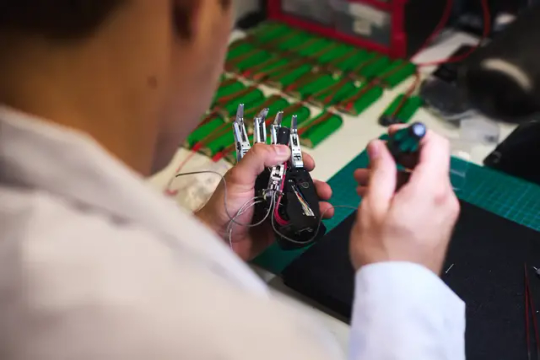
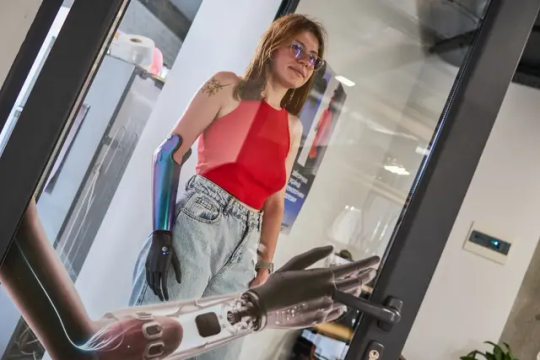
US-Ukraine startup Esper Bionics makes robotic prostheses that are currently being used by over 30 Ukrainian soldiers serving in Russia's war and 80 veterans in Ukraine.
While the bionic arms and hands are not for military use and are not durable enough for combat, the wartime setting has yielded live feedback for the company from soldiers and veterans. One such example of Esper Bionics striving to meet the needs of their clients was making the fingers in the hand out of metal so that it could withstand more stress.
The company never planned to provide bionic prosthetic hands that would help soldiers return to combat back in 2019 when it was founded, but Russia's full scale invasion changed the startup's course. Now, research and development, assembly, and production all take place in Ukraine.
Through its donor-funded program Esper for Ukraine, the company is able to donate all the hands it produces to Ukrainians in need of prostheses.
In an example of artificial intelligence being used for good, Esper Bionics wants to incorporate AI into their bionic hands so the prostheses are more "context-aware" and "better able to predict its user's movements" and what the user wants to do in any particular situation.
The idea behind Esper Bionics' AI-powered future hand will be to create “an entire ecosystem” that can pass information from a series of sensors attached to its user to cloud-based software that constantly analyzes data to learn its users' habits.
The robotic look isn't just for functionality either, but a company goal to avoid the "uncanny valley" look. With attractive branding and designs, Chief of Marketing Dmytro Ganush says Esper Bionics seeks to promote the idea that people with limb differences don’t have a medical issue but “a really interesting lifestyle” or, if anything, “a gadget just like any other."
---
Ukraine is highly likely to become the country with the most prostheses used among its population. The effort to normalize and de-stigmatize disability must start now, and I'm glad Esper Bionics seems to have this in mind with their designs. The enthusiasm users have in the design of the bionic hands is promising, and I hope everyone involved has a bright future.
Source: Ukrainian startup Esper Bionics makes cyborgs a reality
#Ukraine#AI for good#artificial intelligence#disability visibility#prosthetics#prostheses#cyborg#AI#bionics#disability#disability stigma#robotics#Ukrainian soldiers#technology#veterans#article in link
24 notes
·
View notes
Text
Continuing from here:
#The Conversation#articles#mining#mineral mines#exploitation#slavery#child labour#child labor#workers' rights#Democratic Republic of Congo#DRC#cobalt mines#technology#off topic
7 notes
·
View notes
Text
Last month I wrote a post about my intention to get off US tech platforms and services. I’d been considering it for a while, and even taking small steps in that direction, but the alliance between Silicon Valley and Donald Trump, paired with the growing threats from the United States, finally made me take the plunge.
I’m planning to publish a longer list of alternatives for others who want to start shifting away from US tech companies in the near future. But before that, I wanted to provide an update on how things are going. The truth is that getting off the tech services most of us have come to rely on is (probably unsurprisingly) a challenging task because there’s only so much an individual can do to push back on structural forces and a purposeful limitation on the choices available to us.
40 notes
·
View notes